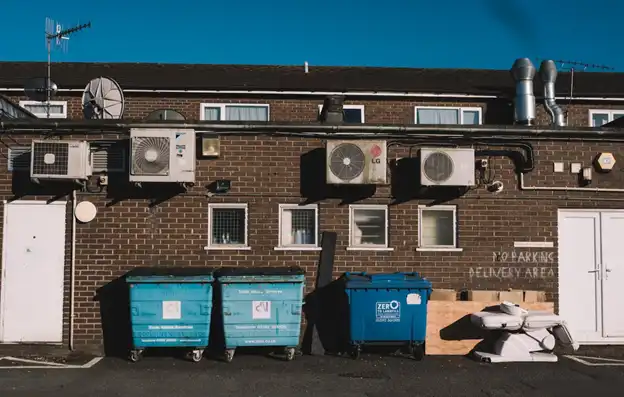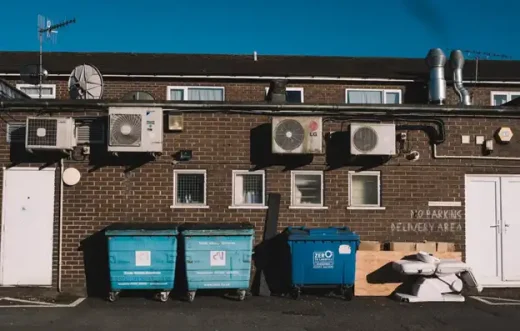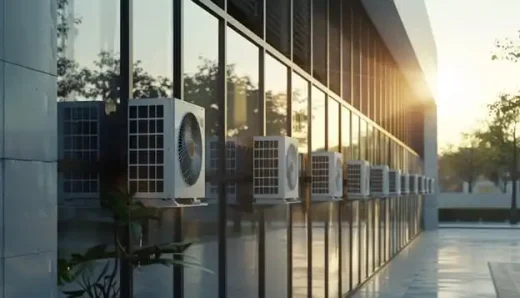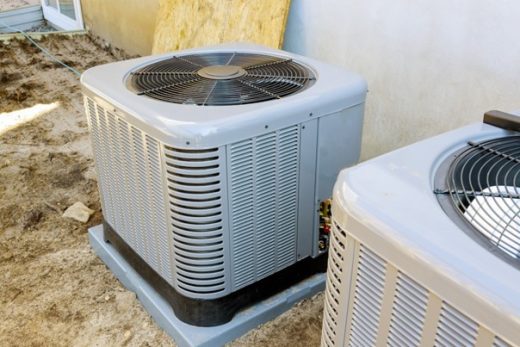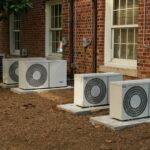How renewable technologies enhance HVAC systems, Modern architectural design, Heating ventilation and air conditioning maintenance
How Renewable Technologies Enhance HVAC Systems for Sustainable Building Design
13 November 2024
Sustainable building design continues to gain momentum in 2024, with renewable technologies transforming HVAC systems. Geothermal heating and solar energy innovations revolutionize how buildings achieve energy efficiency.
Modern architects seek eco-friendly solutions that meet current demands, leading them to adopt these advanced systems.
Understanding the integration of renewables into HVAC designs is vital for future-proofing projects. Professionals must stay informed about emerging trends in sustainable architecture.
By exploring this article, you’ll discover how technology enhances system performance and where you can find essential training resources for a career in this dynamic field.
How Trainers Influence Sustainable Building Practices in HVACR
Sustainable building harnesses insights from a wide range of professionals. These include architects, construction engineers, sustainable energy experts, and HVAC technicians, just to name a few. With technology fast advancing, trainers have a huge role in shaping future-ready specialists.
They guide these learners through the complexities of renewable integration with traditional systems. Real-world applications and innovations demand such comprehensive knowledge.
For instance, let’s take an aspiring professional in heating, ventilation, air conditioning, and refrigerant charging stations. Accessing a modernized HVACR technician training course empowers such individuals with the skills needed to contribute effectively.
These courses often offer practical exposure alongside theoretical learning – crucial for understanding sustainable systems like geothermal heating or solar-powered air conditioning. Well-equipped technicians play vital roles in advancing eco-friendly practices that define modern architecture.
Geothermal Heating Systems Explained
Talk of tapping into the Earth’s core for heat that keeps buildings warm. Clean and efficient, geothermal systems harness stable underground temperatures to regulate interior climates year-round. This process reduces reliance on fossil fuels by transferring naturally stored energy via heat pumps.
Incorporating this sustainable building technology can lower utility costs significantly while shrinking carbon footprints. It’s not just about saving money; it’s a commitment to environmental stewardship through innovation in HVAC system design and function.
Solar Energy’s Role in HVAC
The sun is perhaps the most abundant energy source available, transforming how buildings harness power. Integrating solar panels into HVAC systems enables sustainable climate control while reducing grid dependence.
By designing structures with south-facing windows and strategic panel placement, architects maximize solar gain and efficiency. This approach cuts emissions, curtails utility expenses, and complements architectural aesthetics.
Merging these elements not only champions sustainability but also enhances overall building performance seamlessly.
The Impact of Wind Power on Ventilation Efficiency
In case you didn’t know, one wind turbine can generate enough electricity to power hundreds of homes annually. Such energy, especially in windy regions, revolutionizes building ventilation systems.
Ideal for coastal or open landscapes, turbines integrate seamlessly with HVAC technologies. They provide a steady power supply and enhance air circulation efficiency while reducing dependency on traditional energy sources.
This not only promotes sustainability but also lowers operating costs, making buildings more eco-friendly and efficient.
Water-Source Heat Pumps: A Game Changer for Buildings
More efficient than their air or ground-based counterparts, water-source heat pumps excel in leveraging nearby aquatic resources. They extract energy from lakes, rivers, or wells to provide consistent heating and cooling.
This technology enhances HVAC systems’ effectiveness while minimizing environmental impact. Ideal for buildings near stable water bodies, heat pumps contribute significantly to energy conservation efforts and sustainability goals.
Such innovation ensures optimal comfort with reduced emissions and operational costs.
Passive Cooling Techniques with Modern Twists
Adopting passive cooling techniques in modern architecture efficiently maintains comfort without relying heavily on mechanical systems. This sustainable approach creatively combines traditional methods with cutting-edge materials and designs.
Key techniques include:
- Cross ventilation for airflow optimization
- Thermal mass used to regulate temperature swings
- Shading devices like louvers or awnings
- Green roofs to absorb solar radiation
These strategies not only reduce energy consumption but also enhance architectural aesthetics. Innovative adaptations allow buildings to stay cool naturally, preserving the environment without hurting the owner’s budget. Implementing these measures fosters healthier indoor climates, proving invaluable in sustainable building practices.
Energy Recovery Ventilation: Harnessing the Air’s Potential
Modern energy recovery ventilation (ERV) systems unlock air’s hidden potential, capturing heat from outgoing exhaust and redistributing it to incoming fresh air. This process dramatically boosts HVAC efficiency by minimizing wasted energy.
Ideal for climates with extreme temperatures, ERV technology not only reduces heating and cooling costs but also enhances indoor air quality – offering both comfort and eco-friendly advantages.
Smart Thermostats: Bridging Technology and Sustainability
Revolutionizing HVAC management, smart thermostats integrate seamlessly with modern systems. They learn user preferences and adapt settings to optimize energy use. Working alongside renewable energy sources, these intelligent devices empower homeowners to achieve both comfort and sustainability effortlessly.
Innovative Insulation Materials to Support HVAC Efficiency
It keeps cool air inside and blocks warm air from entering during warmer months. In winter, insulation retains heat indoors, preventing it from escaping.
Emerging materials like aerogel and phase-change composites boost HVAC efficiency. These cutting-edge insulations reduce thermal bridging and energy loss, enabling systems to operate optimally with minimal waste.
Integrating renewable technology in HVAC systems is instrumental to sustainable building design. This forward-thinking approach enhances efficiency. Beyond that, it reduces environmental impact and sets a new standard for future architecture.
Comments on this guide to How renewable technologies enhance HVAC systems article are welcome.
HVAC – Air Conditioners
Air Conditioners Posts
Why Rely On Professionals For Air Conditioning, Heating, HVAC
HVAC Systems in Modern Architecture
5 great advice from top rated HVAC contractor
Buildings
Residential Architecture Articles
Comments / photos for the How Renewable Technologies Enhance HVAC Systems for Sustainable Building Design page welcome.

